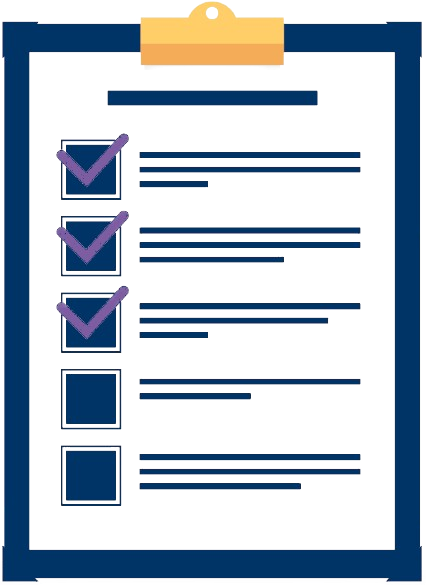Suggestions based on the Question and Answer that you are currently viewing
A hot working operation is carried out at various speeds. The strength constant = 30,000 lb/in2 and the strain-rate sensitivity exponent = 0.15. Determine the flow stress if the strain rate is (a) 0.01/sec (b) 1.0/sec, (c) 100/sec
In porcelain enameling, what is frit?
On what form does an S corporation report its income to the IRS? When is the tax return due? What information does the S corporation provide to shareholders to allow them to complete their tax returns?
: Define corporate culture as part of the organization’s internal environment, and identify when a culture becomes toxic for some or all employees.
: Describe transformational leadership and when it should be used.
The financial statements of P&G are presented in Appendix 5B. The company’s complete annual report, including the notes to the financial statements, can be accessed at the book’s companion website, www. wiley.com/college/kieso. Instructions Refer to P&G’s financial statements and the accompanying notes to answer the following questions. (a) What descriptions are used by P&G in its balance sheet to classify its property, plant, and equipment? (b) What method or methods of depreciation does P&G use to depreciate its property, plant, and equipment? (c) Over what estimated useful lives does P&G depreciate its property, plant, and equipment? (d) What amounts for depreciation and amortization expense did P&G charge to its income statement in 2011, 2010, and 2009? (e) What were the capital expenditures for property, plant, and equipment made by P&G in 2011, 2010, and 2009?
Walkin Inc. is considering the write-down of its long-term plant because of a lack of profitability. Explain to the management of Walkin how to determine whether a write-down is permitted.
Ogala Corporation purchased a significant amount of raw materials inventory for a new product that it is manufacturing. Ogala uses the lower-of-cost-or-market rule for these raw materials. The replacement cost of the raw materials is above the net realizable value, and both are below the original cost. Ogala uses the average-cost inventory method for these raw materials. In the last 2 years, each purchase has been at a lower price than the previous purchase, and the ending inventory quantity for each period has been higher than the beginning inventory quantity for that period. Instructions (a) (1) At which amount should Ogala’s raw materials inventory be reported on the balance sheet? Why? (2) In general, why is the lower-of-cost-or-market rule used to report inventory? (b) What would have been the effect on ending inventory and cost of goods sold had Ogala used the LIFO inventory method instead of the average-cost inventory method for the raw materials? Why?
Explain how gains or losses on impaired assets should be reported in income.
Explain the advantage of a swap option to a financial institution that wants to swap fixed payments for floating payments. (LO2)
How should the amount of interest capitalized be disclosed in the notes to the financial statements? How should interest revenue from temporarily invested excess funds borrowed to finance the construction of assets be accounted for?
Assume the following year 2 income statement for Johnstone Corporation, which was a C corporation in year 1 and elected to be taxed as an S corporation beginning in year 2. Johnstone’s earnings and profits at the end of year 1 were $10,000. Marcus is Johnstone’s sole shareholder, and he has a stock basis of $40,000 at the end of year 1. What is Johnstone’s accumulated adjustments account at the end of year 2, and what amount of dividend income does Marcus recognize on the year 2 distribution in each of the following alternative scenarios? Johnstone Corporation Income Statement December 31, Year 2 Year 2 (S corporation) Sales revenue $150,000 Cost of goods sold (35,000) Salary to owners (60,000) Employee wages (50,000) Depreciation expense (4,000) Miscellaneous expenses (4,000) Interest income 10,000 Overall net income $7,000
Describe submerged arc welding (SAW).
Manilow Corporation operates in an industry that has a high rate of bad debts. Before any year-end adjustments, the balance in Manilow’s Accounts Receivable account was $555,000 and Allowance for Doubtful Accounts had a credit balance of $40,000. The year-end balance reported in the balance sheet for Allowance for Doubtful Accounts will be based on the aging schedule shown below. Probability of Days Account Outstanding Amount Collection Less than 16 days $300,000 .98 Between 16 and 30 days 100,000 .90 Between 31 and 45 days 80,000 .85 Between 46 and 60 days 40,000 .80 Between 61 and 75 days 20,000 .55 Over 75 days 15,000 .00 Instructions (a) What is the appropriate balance for Allowance for Doubtful Accounts at year-end? (b) Show how accounts receivable would be presented on the balance sheet. (c) What is the dollar effect of the year-end bad debt adjustment on the before-tax income?
Recently, a government official in Europe stated that the European Central Bank needs to weaken the euro so as to improve the European economy. Write a short essay that explains the logic behind this recommendation, and state whether you believe the strategy would be successful.
How is a business activity distinguished from an investment activity? Why is this distinction important for the purpose of calculating federal income taxes?
Carolina Corporation, an S corporation, has no corporate E&P from its years as a C corporation. At the end of the year, it distributes a small parcel of land to its sole shareholder Shadiya. The fair market value of the parcel is $70,000, and its tax basis is $40,000. Shadiya’s basis in her stock is $14,000. Assume Carolina Corporation reported $0 taxable income before considering the tax consequences of the distribution.
The financial statements of Marks and Spencer plc (M&S) are available at the book’s companion website or can be accessed at http://annualreport.marksandspencer.com/_assets/downloads/Marks-and- Spencer-Annual-report-and-financial-statements-2012.pdf. Instructions Refer to M&S’s financial statements and the accompanying notes to answer the following questions. (a) What descriptions are used by M&S in its statement of financial position to classify its property, plant, and equipment? (b) What method or methods of depreciation does M&S use to depreciate its property, plant, and equipment? (c) Over what estimated useful lives does M&S depreciate its property, plant, and equipment? (d) What amounts for depreciation and amortization expense did M&S charge to its income statement in 2012 and 2011? (e) What were the capital expenditures for property, plant, and equipment made by M&S in 2012 and 2011?
Answer the following multiple-choice questions. 1. GAAP stands for: (a) governmental auditing and accounting practices. (b) generally accepted attest principles. (c) government audit and attest policies. (d) generally accepted accounting principles. 2. Accounting standard-setters use the following process in establishing accounting standards: (a) Research, exposure draft, discussion paper, standard. (b) Discussion paper, research, exposure draft, standard. (c) Research, preliminary views, discussion paper, standard. (d) Research, discussion paper, exposure draft, standard. 3. GAAP is comprised of: (a) FASB standards, interpretations, and concepts statements. (b) FASB financial standards. (c) FASB standards, interpretations, EITF consensuses, and accounting rules issued by FASB predecessor organizations. (d) any accounting guidance included in the FASB Codification. 4. The authoritative status of the conceptual framework is as follows. (a) It is used when there is no standard or interpretation related to the reporting issues under consideration. (b) It is not as authoritative as a standard but takes precedence over any interpretation related to the reporting issue. (c) It takes precedence over all other authoritative literature. (d) It has no authoritative status. 5. The objective of financial reporting places most emphasis on: (a) reporting to capital providers. (b) reporting on stewardship. (c) providing specific guidance related to specific needs. (d) providing information to individuals who are experts in the field. 6. General-purpose financial statements are prepared primarily for: (a) internal users. (b) external users. (c) auditors. (d) government regulators. 7. Economic consequences of accounting standard-setting means: (a) standard-setters must give first priority to ensuring that companies do not suffer any adverse effect as a result of a new standard. (b) standard-setters must ensure that no new costs are incurred when a new standard is issued. (c) the objective of financial reporting should be politically motivated to ensure acceptance by the general public. (d) accounting standards can have detrimental impacts on the wealth levels of the providers of financial information. 8. The expectations gap is: (a) what financial information management provides and what users want. (b) what the public thinks accountants should do and what accountants think they can do. (c) what the governmental agencies want from standard-setting and what the standard-setters provide. (d) what the users of financial statements want from the government and what is provided.
Matt Holmes recently joined Klax Company as a staff accountant in the controller’s office. Klax Company provides warehousing services for companies in several midwestern cities. The location in Dubuque, Iowa, has not been performing well due to increased competition and the loss of several customers that have recently gone out of business. Matt’s department manager suspects that the plant and equipment may be impaired and wonders whether those assets should be written down. Given the company’s prior success, this issue has never arisen in the past, and Matt has been asked to conduct some research on this issue. Instructions If your school has a subscription to the FASB Codification, go to http://aaahq.org/asclogin.cfm to log in and prepare responses to the following. Provide Codification references for your responses. (a) What is the authoritative guidance for asset impairments? Briefly discuss the scope of the standard (i.e., explain the types of transactions to which the standard applies). (b) Give several examples of events that would cause an asset to be tested for impairment. Does it appear that Klax should perform an impairment test? Explain. (c) What is the best evidence of fair value? Describe alternate methods of estimating fair value.
Alabama Corporation, an S corporation, liquidates this year by distributing a parcel of land to its sole shareholder, Mark Ingram. The fair market value of the parcel is $50,000, and its tax basis is $30,000. Mark’s basis in his stock is $25,000.
Hanson Company is constructing a building. Construction began on February 1 and was completed on December 31. Expenditures were $1,800,000 on March 1, $1,200,000 on June 1, and $3,000,000 on December 31. Compute Hanson’s weighted-average accumulated expenditures for interest capitalization purposes.
How did the Financial Reform Act of 2010 change the reserve requirements of the FDIC’s Deposit Insurance Fund? (LO7)
Garcia Corporation purchased a truck by issuing an $80,000, 4-year, zero-interest-bearing note to Equinox Inc. The market rate of interest for obligations of this nature is 10%. Prepare the journal entry to record the purchase of this truck.
Inuk is the sole shareholder of Tex Corporation. Inuk first formed Tex as a C corporation. However, in an attempt to avoid having Tex’s income double-taxed, Inuk elected S corporation status for Tex several years ago. On December 31, 2024, Tex reports $5,000 of earnings and profits from its years as a C corporation and $50,000 in its accumulated adjustments account from its activities as an S corporation (including its 2024 activities). Inuk discovered that for the first time Tex was going to have to pay the excess net passive income tax. Inuk wanted to avoid having to pay the tax, but he determined the only way to avoid the tax was to eliminate Tex’s E&P by the end of 2024. He determined that, because of the distribution ordering rules (AAA first), he would need to have Tex immediately (in 2024) distribute $55,000 to him. This would clear out Tex’s accumulated adjustments account first and then eliminate Tex’s C corporation earnings and profits in time to avoid the excess net passive income tax. Inuk was not sure Tex could come up with $55,000 of cash or property in time to accomplish his objective. Does Inuk have any other options to eliminate Tex’s earnings and profits without first distributing the balance in Tex’s accumulated adjustments account?
The benefits of buying with AnswerDone:

Access to High-Quality Documents
Our platform features a wide range of meticulously curated documents, from solved assignments and research papers to detailed study guides. Each document is reviewed to ensure it meets our high standards, giving you access to reliable and high-quality resources.

Easy and Secure Transactions
We prioritize your security. Our platform uses advanced encryption technology to protect your personal and financial information. Buying with AnswerDone means you can make transactions with confidence, knowing that your data is secure

Instant Access
Once you make a purchase, you’ll have immediate access to your documents. No waiting periods or delays—just instant delivery of the resources you need to succeed.
